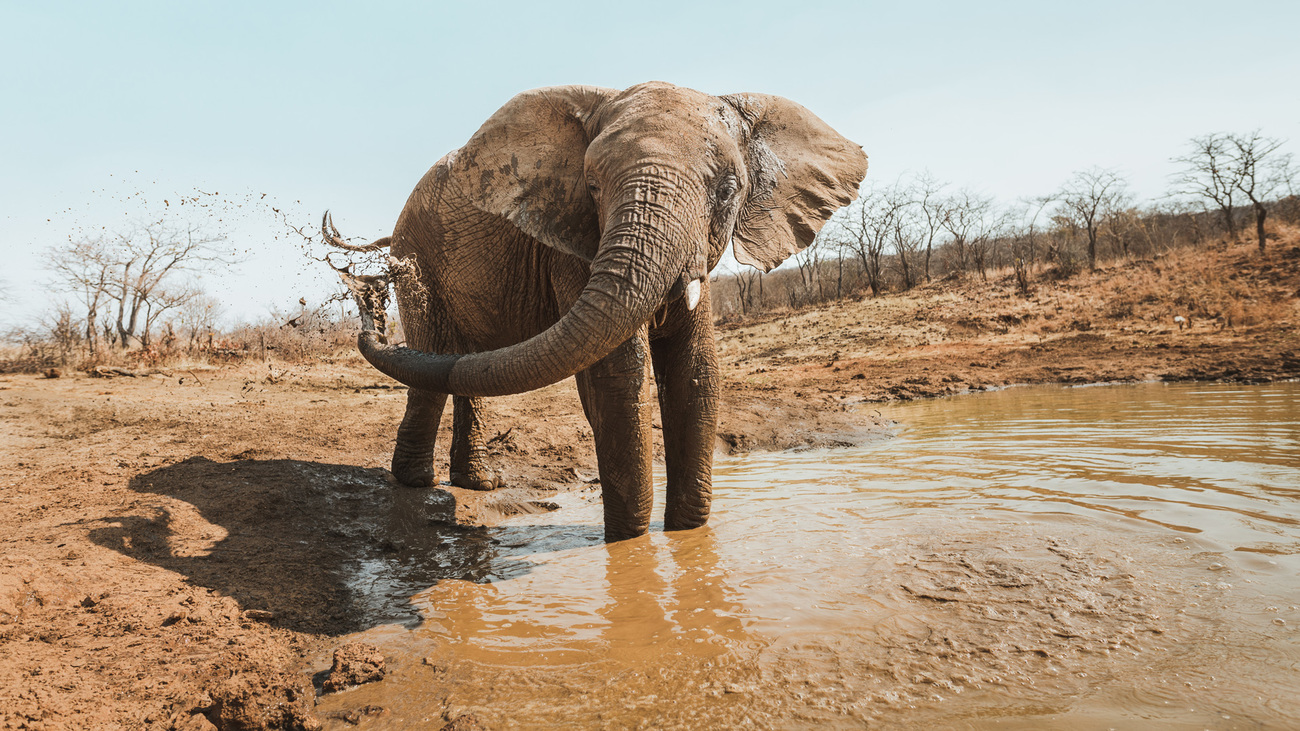Elephant Nursery and Landscape Project - Zimbabwe
Giving orphaned elephants a second chance at a life back in the wildelephants flourish in massive Zimbabwe forest reserve
elephants flourish in massive Zimbabwe forest reserve

Elephant numbers are on the rise at Zimbabwe's Panda Masuie Forest Reserve, which is quickly becoming a haven for the region’s iconic and endangered wildlife.
A recent wildlife census in the reserve counted 512 savanna elephants, up from 285 observed in last year’s census—a 79% increase. There were also 212% more warthogs and 25% more kudu in the reserve compared to 2021.
“The results are hugely encouraging. Panda Masuie is becoming a stronghold for many species of animals,” says Jos Danckwerts, Conservation Director for the IFAW-supported Panda Masuie Release Project.
an elephant refuge
The 85,000-square-acre reserve is located within the Kavango Zambezi Transfrontier Conservation Area (KAZA TFCA), the world’s largest terrestrial transfrontier conservation initiative, spanning an area more than twice the size of Germany and Austria combined.
Within KAZA TFCA, elephants are highly mobile. They’re also highly perceptive to the threats and disturbances around them and tend to migrate to the safest areas.
The new counts indicate that elephants are using Panda Masuie as a safe refuge, says Danckwerts, likely due to the high level of protection from poaching and forest fires that the reserve offers.
Panda Masuie is co-managed by Wildlife Is Life and the Forestry Commission of Zimbabwe, with support from IFAW. Since this partnership began, significant time and resources have been invested to protect and restore the forest by tackling key conservation challenges, including poaching and wildfires. As a result of these efforts, elephants, lions, zebras and other species can now roam freely though the reserve, safe from human threats.
“This shows that large wild landscapes, and nature as a whole, can recover and thrive given enough protection,” says Danckwerts.
wildlife by the numbers
The annual waterhole game census is conducted every October at the end of the dry season, during the full moon. Rangers and volunteers observe waterholes throughout Panda Masuie for 24 hours straight, counting wildlife as they arrive to drink.
The counts provide an important baseline to monitor how the wildlife populations in the reserve are faring, and to inform the planning and management of elephants and their habitat. “Having accurate and reliable figures helps us to make long-term and informed decisions about the landscape and the wildlife resources,” says Phillip Kuvawoga, IFAW’s Director of Landscape Conservation.
Kuvawoga adds, “The thriving elephant population and the increase in other wildlife in the forest reserve is by no means an accident; it is a result of long-term, deliberate interventions aimed at habitat restoration and ensuring persistence of viable populations in healthy ecosystems. We are extremely delighted that our collaborative efforts and investments are now paying off.”
protecting and restoring
Panda Masuie offers safe habitat for KAZA TFCA’s 330,000 plus savanna elephants—the world’s largest contiguous elephant population—as they roam across the Transfrontier Conservation Area.
Protecting and restoring the reserve will therefore be critical to the success of IFAW’s Room to Roam initiative—an ambitious plan to secure and connect habitats, creating safe passages for elephants and other wildlife in East and Southern Africa.
Related content
Our work can’t get done without you. Please give what you can to help animals thrive.